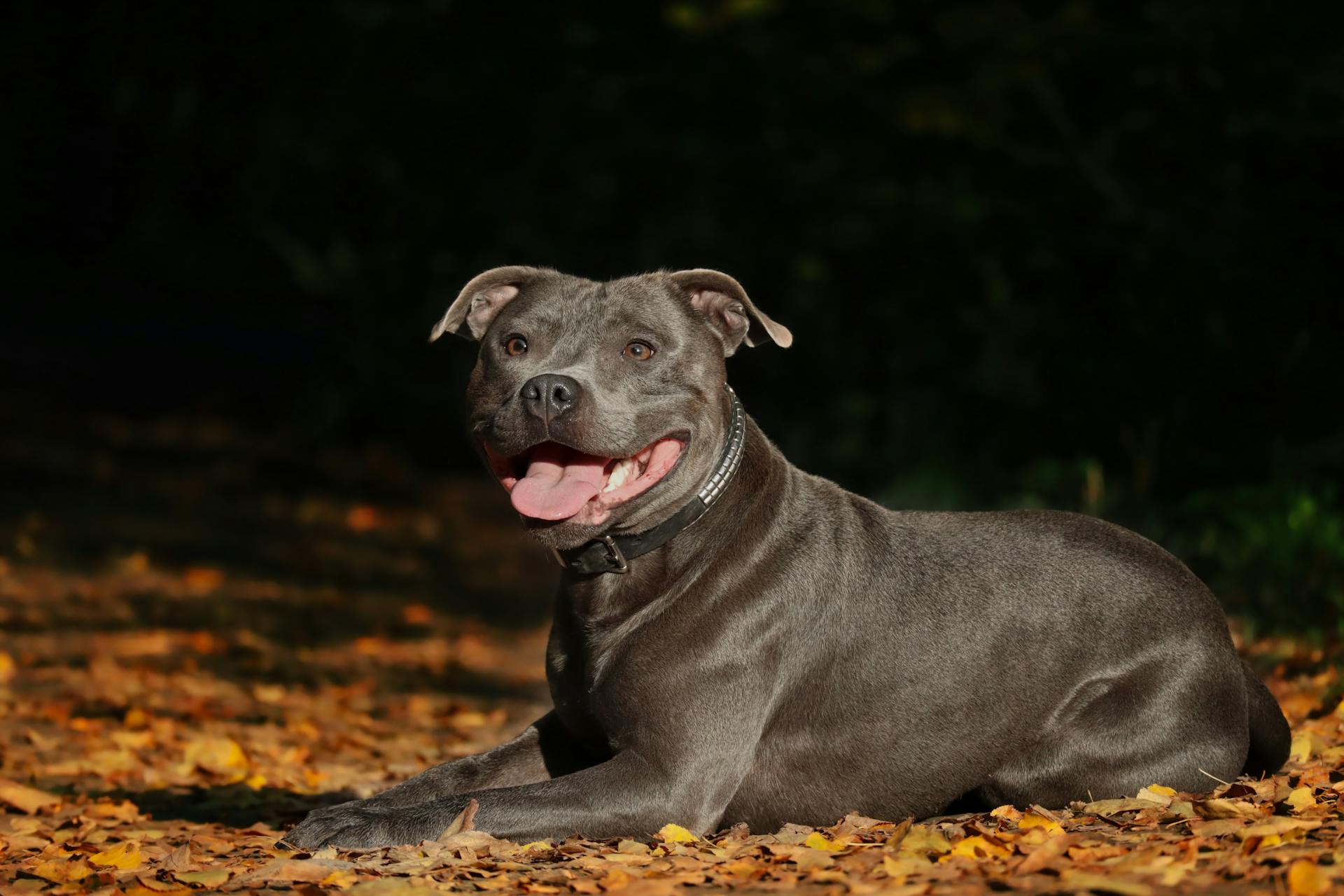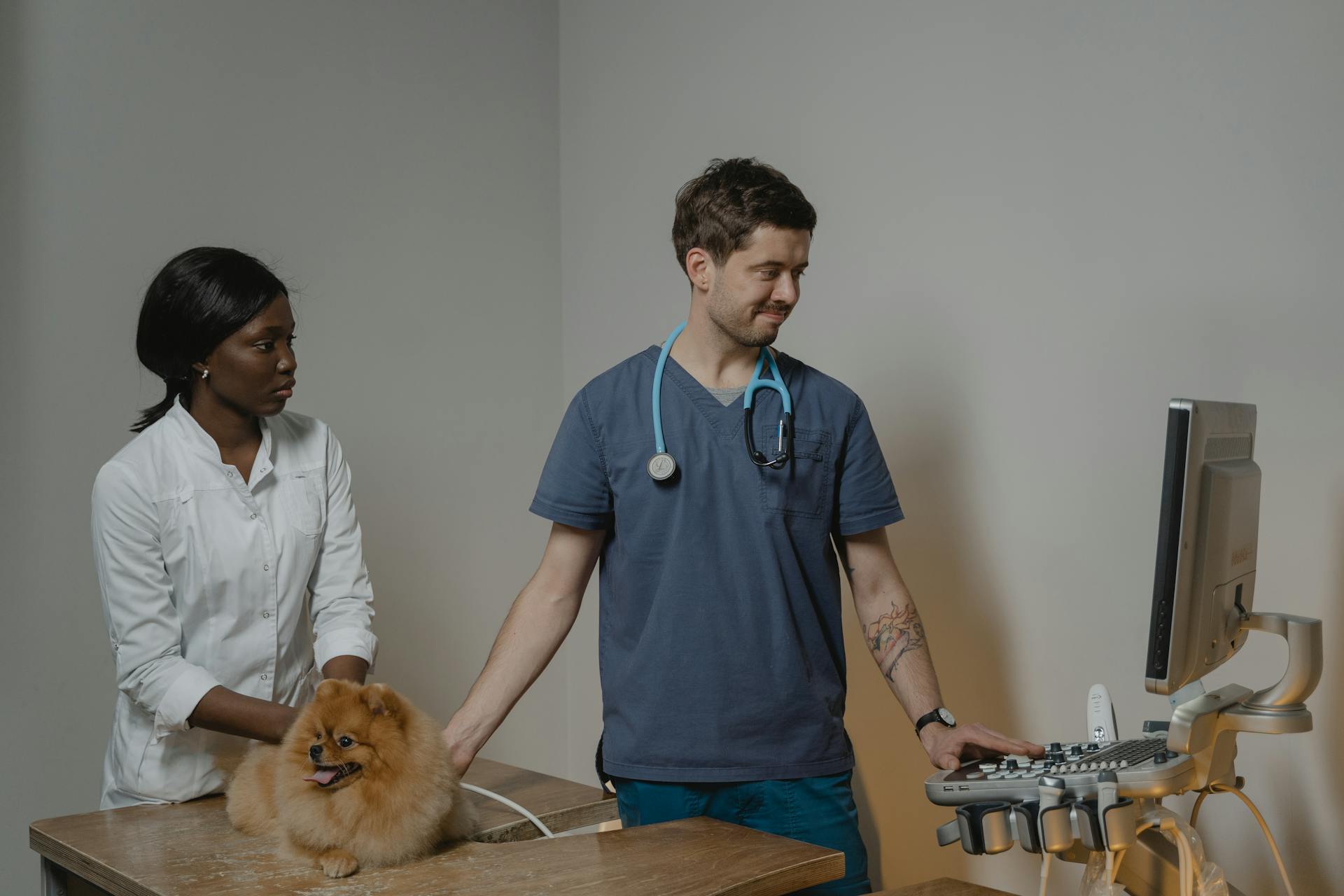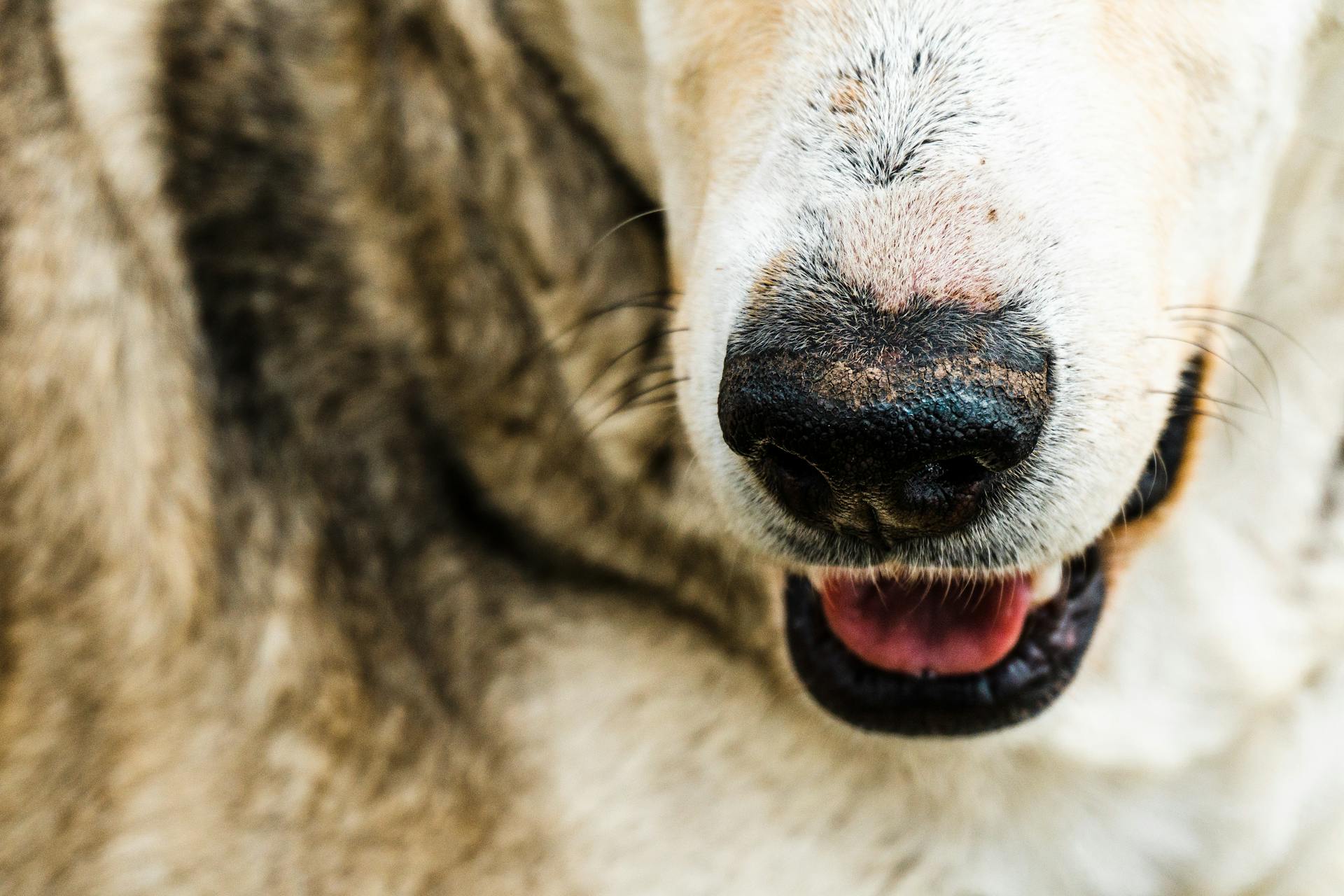
Canine mouth cancer is a serious and often painful condition that affects many dogs. It's the most common type of cancer in dogs.
Mouth cancer can be caused by a variety of factors, including genetics, exposure to certain chemicals, and a history of radiation therapy.
Dogs with a history of chronic irritation or inflammation in the mouth are more likely to develop mouth cancer. This can be due to a variety of factors, including dental problems or chronic gum disease.
Causes and Types of Canine Mouth Cancer
Mouth cancer in dogs is a serious issue that affects many breeds. It's not always possible to determine the cause, but genetic and environmental risk factors are often at play.
Some breeds seem to be more prone to developing mouth cancer, including weimaraners, German shepherds, boxers, chows, and miniature poodles.
While there are various types of cancer that can affect a dog's mouth, squamous cell carcinomas are a common type of mouth cancer in dogs.
Here's a list of some types of mouth cancer that can affect dogs:
- Squamous Cell Carcinomas in Dogs
- Salivary Gland Tumors in Dogs
- Basal Cell Tumors in Dogs
These types of cancer can be aggressive and require prompt veterinary attention.
Symptoms and Diagnosis
Oral cancer in dogs can be a sneaky disease, often showing no symptoms until it's in an advanced stage. The average age of dogs diagnosed with oral cancer is 11 years, although it can affect dogs of any age.
Bad breath, or halitosis, is one of the most common symptoms of oral cancer in dogs. This is often accompanied by excessive drooling, which can be a sign that your dog is experiencing oral pain or difficulty eating.
In addition to bad breath and drooling, other common symptoms include trouble chewing, bleeding from the mouth, loose teeth, and visible lumps or masses inside the mouth. These symptoms can be subtle, making it essential for dog owners to be aware of their pet's oral health.
Here are some common symptoms of oral cancer in dogs:
- Bad breath (halitosis)
- Difficulty eating
- Drooling
- Head-shy
- Lethargy
- Not wanting to eat on one side
- Ropey saliva with or without blood
- Weight loss
If you suspect that your dog is showing signs of oral cancer, it's essential to consult with your veterinarian as soon as possible. A thorough physical examination, including a look inside your dog's mouth, will be necessary to determine the presence of tumors or other abnormalities.
Signs and Symptoms
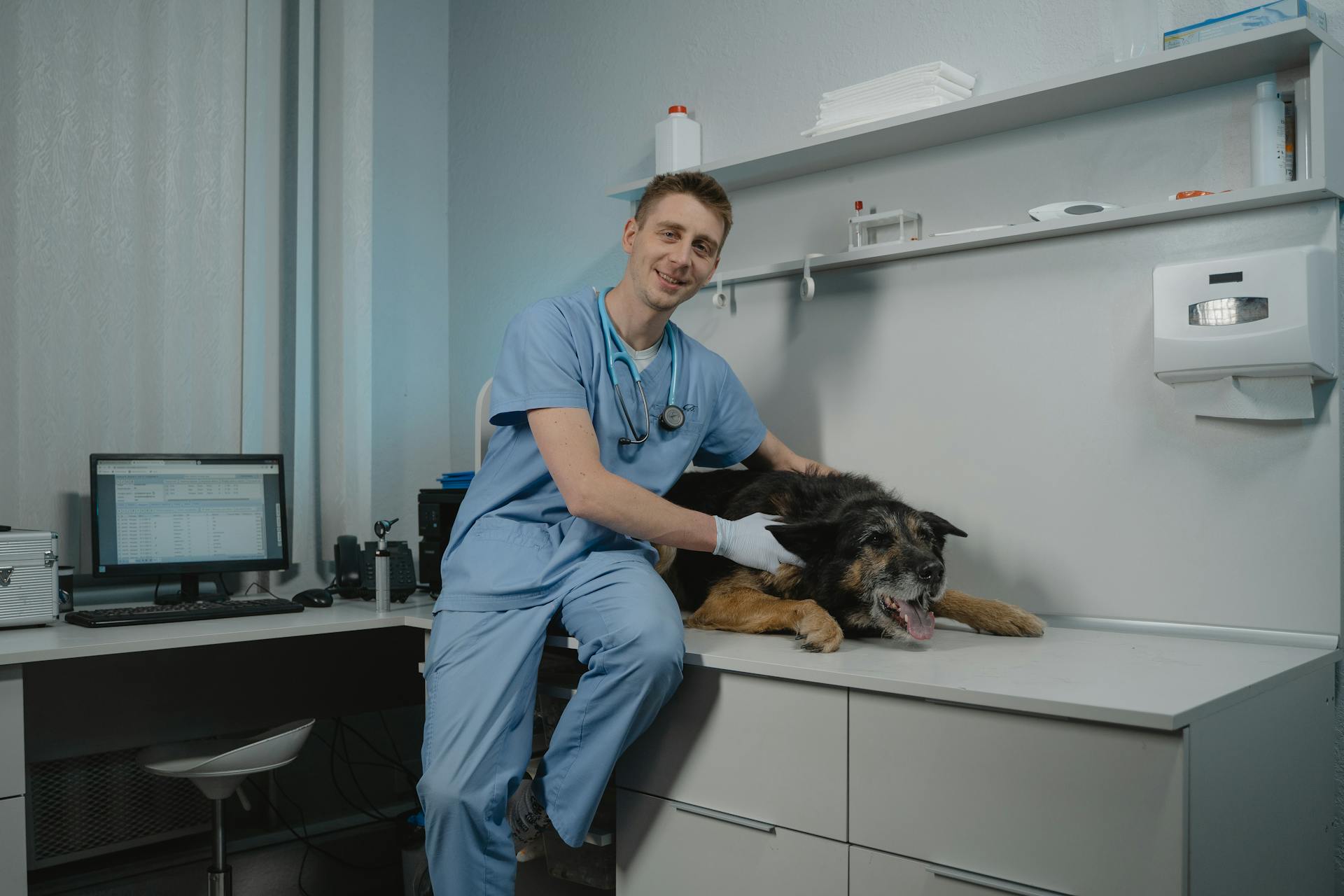
If your dog is showing symptoms of mouth cancer, it's essential to act quickly. The average age of dogs diagnosed with oral cancer is 11 years, although oral cancer can be seen in dogs of any age.
Bad breath, or halitosis, is one of the most common signs of oral cancer in dogs. This can be accompanied by excessive drooling, bleeding from the mouth, and trouble chewing.
Difficulty eating is another common symptom, which can be due to the presence of a tumor or growth in the mouth. Your dog may also show obvious signs of oral pain, such as panting, movement or loss of teeth, and lack of appetite.
Oral tumors can appear as swellings or lumps on the gums around the teeth, or on the roof of the mouth. They can be darker in color than the surrounding tissue, smooth lumps, or cauliflower-like in appearance.
Here are some common signs of oral cancer in dogs:
- Bad breath (halitosis)
- Difficulty eating
- Drooling
- Head-shy
- Lethargy
- Not wanting to eat on one side
- Ropey saliva with or without blood
- Weight loss
It's essential to brush your dog's teeth regularly to familiarize yourself with their mouth and notice any changes. Annual dental exams by a veterinarian are also crucial in detecting oral cancer early.
Tumor Diagnosis and Staging
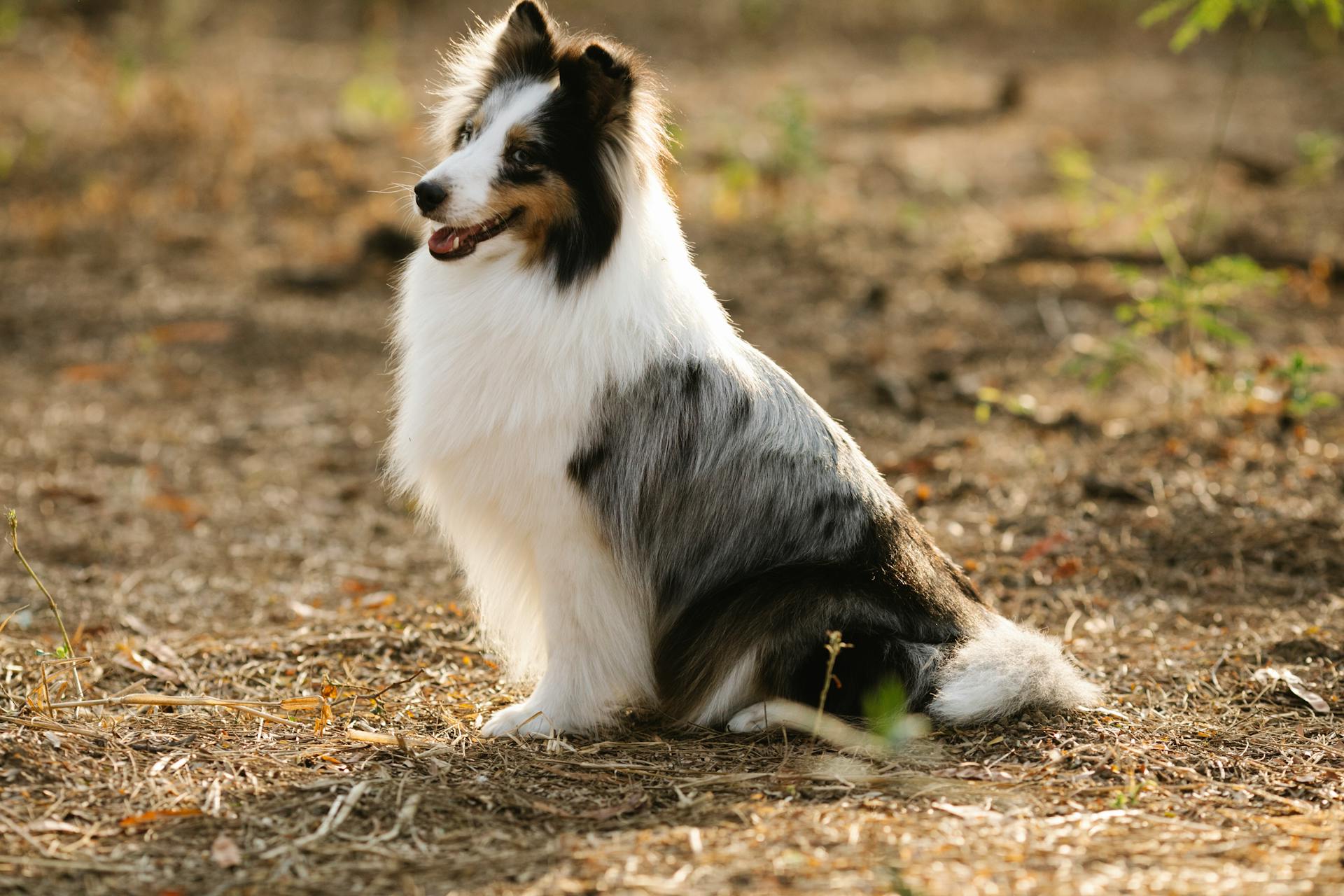
Your veterinarian will likely start by examining your dog's mouth for tumors or other abnormalities, which may require sedation.
A thorough physical examination will also involve bloodwork and a urinalysis to assess your dog's overall health status.
X-ray images of your dog's chest may be taken to check if the growth in the mouth has spread to the chest.
A CT scan or MRI of your dog's mouth may be recommended to determine how invasive the tumor is.
A tissue biopsy will be taken to determine which kind of cancer is present, and in some cases, the entire visible mass can be removed for identification.
Your veterinarian may also take a small sample from the lymph nodes to check for cancerous cells.
To confirm whether the tumor is cancerous, your veterinarian may do a fine-needle aspiration or a biopsy of the tumor and, in some cases, the lymph nodes.
Radiographs or a CT scan of the head or chest area may be necessary to determine if the cancer has spread to other parts of the body.
Your veterinarian may refer you to a board-certified veterinary oncologist for further testing and to consult on treatment options.
If this caught your attention, see: Mast Cell Tumor in Pit Bulls
Treatment and Prognosis
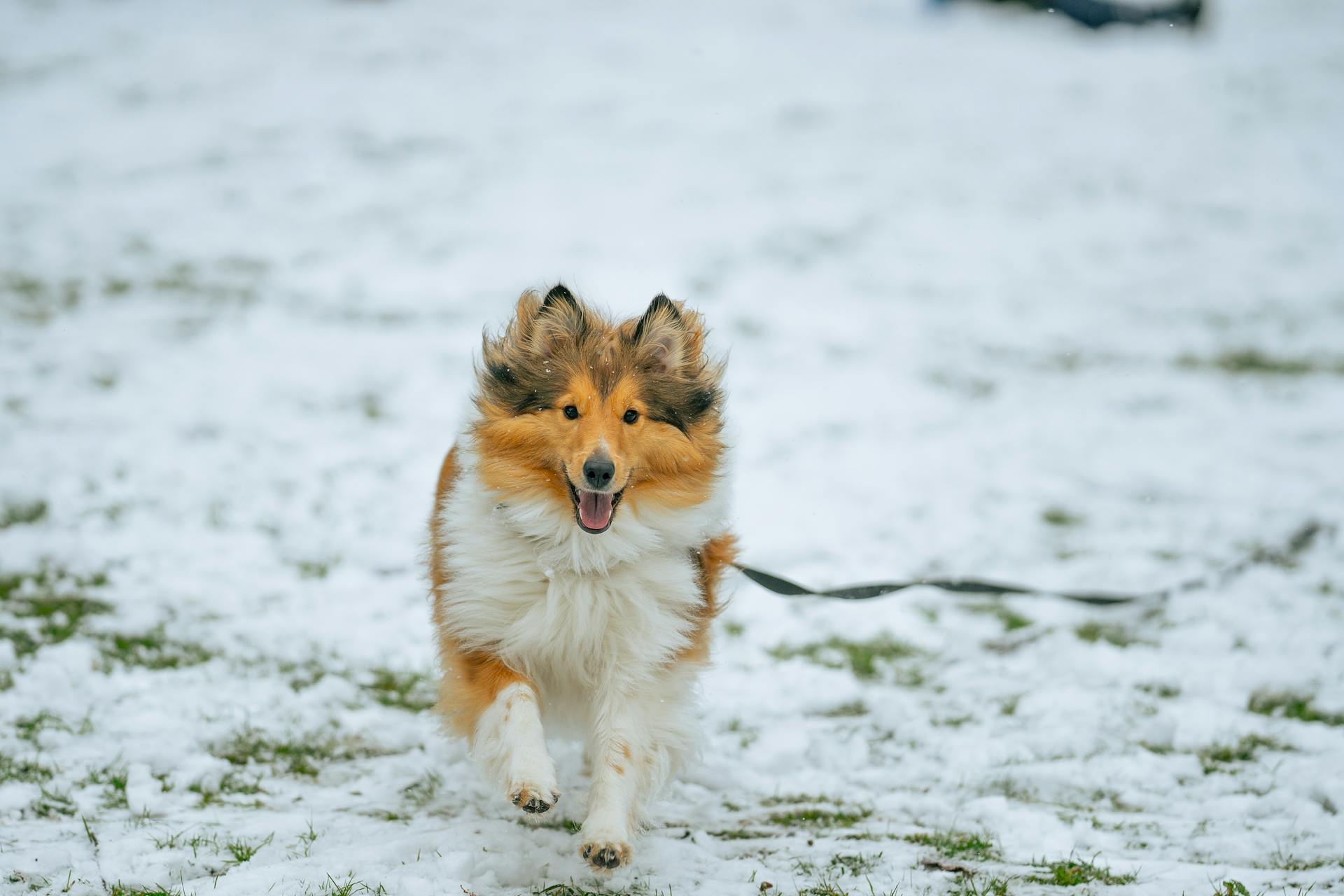
Surgery is often the treatment of choice for dog mouth cancer, but it may not lead to a cure because the tumor often has already spread to other parts of the body.
Your veterinarian may recommend radiation therapy to treat tumors that can't be completely removed with surgery alone. Radiation can also be used in place of surgery if the tumor is too difficult to reach, or too advanced, to be removed by your veterinary oncologist.
Surgery can be a radical procedure, sometimes requiring the removal of part of the jaw to eliminate the majority of cancerous cells at the site. Fortunately, most dogs do well even after such a surgery.
Chemotherapy isn't generally considered effective as a treatment for mouth cancer in dogs, but your vet may recommend radiation therapy or immunotherapy following surgery to help kill cancer cells and allow your pet to recover.
Consider reading: Mast Cell Tumor Boston Terrier
Treatment Options
Surgery is often the treatment of choice for dog mouth cancer, but it may not lead to a cure because the tumor often has already spread to other parts of the body.
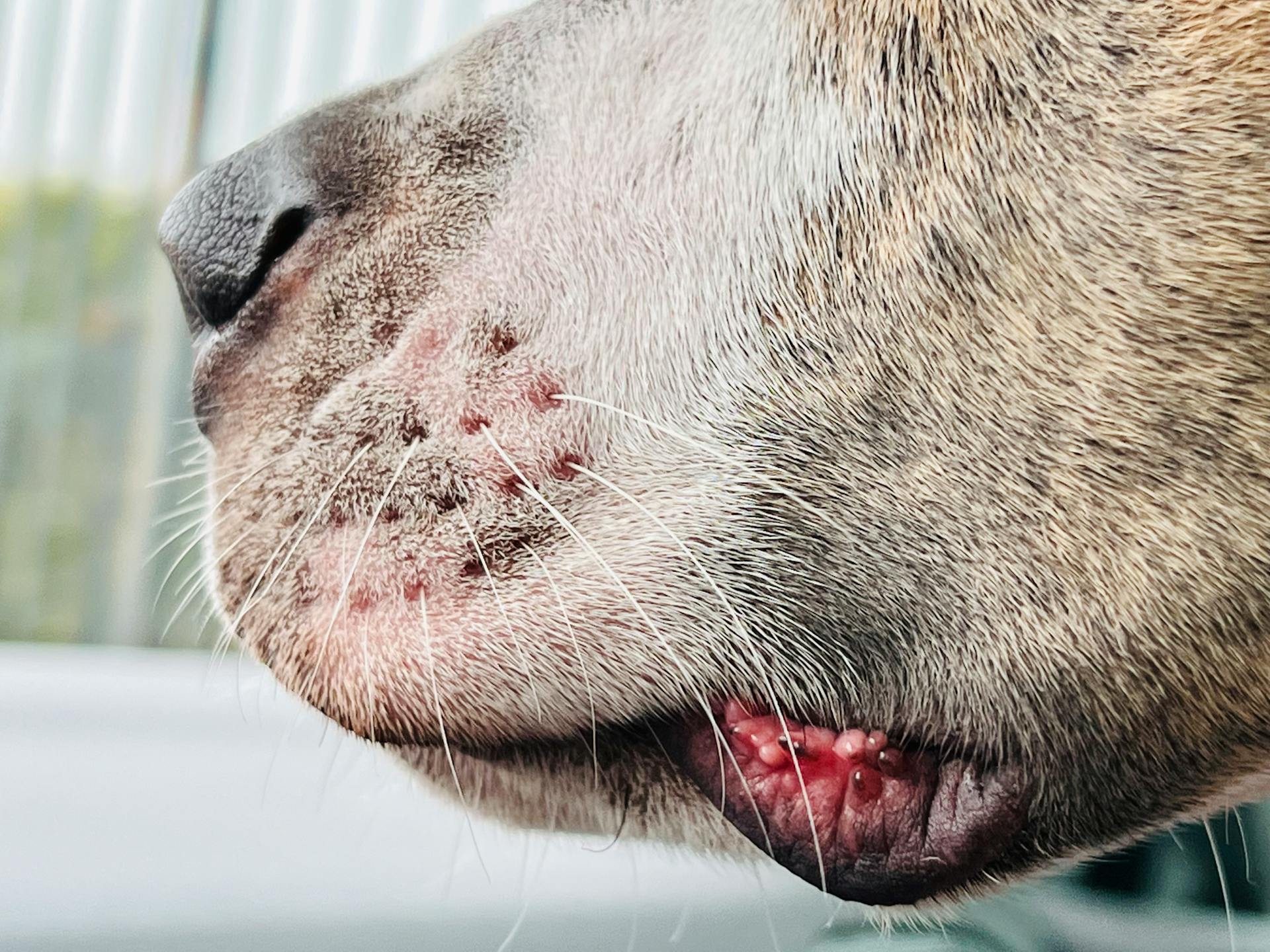
Your veterinarian may recommend radiation therapy to treat tumors that can’t be completely removed with surgery alone. Radiation can also be used in place of surgery if the tumor is too difficult to reach, or too advanced, to be removed by your veterinary oncologist.
Chemotherapy isn't generally considered effective as a treatment for mouth cancer in dogs, but your vet may recommend radiation therapy or immunotherapy following surgery, to help kill cancer cells and allow your pet to recover.
Oral melanomas in dogs can be treated with a form of immunotherapy, which is available as an alternative to traditional treatments.
If your dog is having trouble eating, try feeding your pet soft foods, and make sure to give your dog plenty of fresh water and correctly administer any pain medicine that’s prescribed by your vet.
Radiation for oral cancer in dogs can cause redness, inflammation or ulceration of the mouth in some cases, but these symptoms typically clear up about a week after the radiation is administered.
The extent of surgery depends on the type of cancer and location of the tumor, and often requires removing part or all of the jaw, teeth, and/or surrounding bone.
In some cases, a combination of treatment options is used, including surgery, radiation therapy, chemotherapy, and immunotherapy or vaccines, depending on the individual pet’s specific situation.
Additional reading: Canine Cancer Immunotherapy
The Prognosis
The prognosis for dogs with oral cancer is influenced by several key factors. The type of tumor present is a significant factor in determining the prognosis.
The spread of cancer to other parts of the body greatly affects the chances of a successful outcome. Whether the cancer has spread or not is a crucial piece of information for veterinarians to consider when creating a treatment plan.
Treatment options chosen by pet owners can also impact the prognosis. The chosen treatment option plays a vital role in determining the outcome for dogs with oral cancer.
In some cases, early detection and treatment can lead to a more favorable prognosis. The earlier the cancer is caught, the better the chances of a successful outcome.
On a similar theme: How Fast Does Lymphoma Grow in Dogs
Dog Life Expectancy and Survival
Dog life expectancy and survival are directly tied to the stage of oral cancer diagnosis. If caught early, dogs can live happily for many years, approximately 5-17 years.
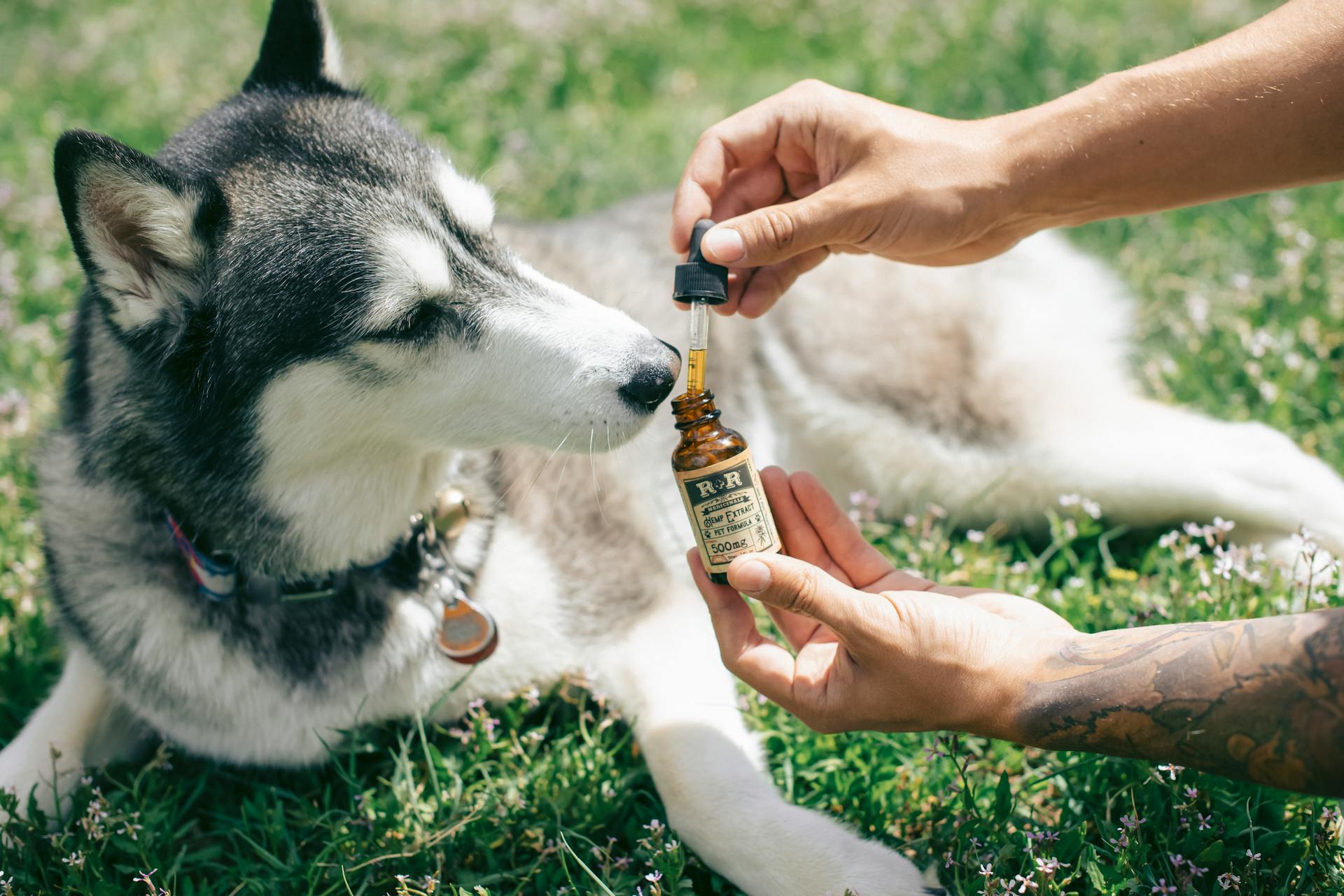
Early detection and treatment are crucial, as this significantly increases the chances of a good outcome. Depending on the type of cancer and location, the tumor can be surgically removed.
Dogs diagnosed in the later stages of oral cancer have a much poorer prognosis. In these cases, the cancer often spreads to other parts of the body, making treatment much more challenging.
Left untreated, the prognosis for dogs with oral cancer is very poor, with an average survival time of just 65 days. This highlights the importance of regular veterinary check-ups and monitoring for any signs of oral cancer.
A unique perspective: Canine Cancer Prognosis
Understanding Canine Mouth Cancer
Canine mouth cancer is a serious health issue that can affect your furry friend's quality of life. Bad breath is one of the most common symptoms of mouth cancer in dogs.
Dogs with mouth cancer often experience excessive drooling, which can be a sign of the disease. This can be a noticeable change in behavior for some pet owners.
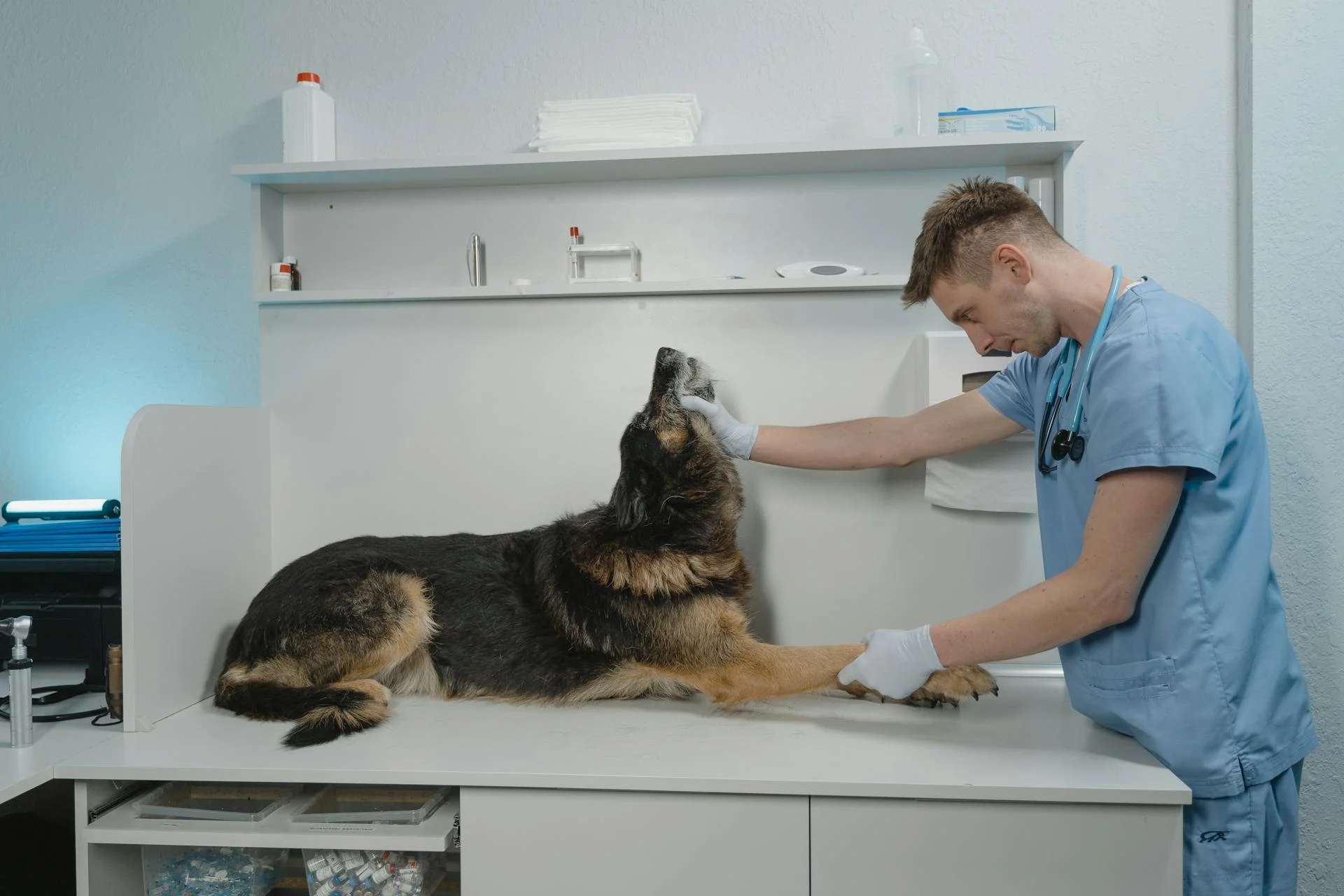
Bleeding from the mouth is another common symptom of mouth cancer in dogs. If you notice any unusual bleeding, it's essential to consult with your veterinarian.
Trouble chewing is a sign of mouth cancer in dogs, which can make eating and digesting food challenging. This can lead to weight loss, another common symptom of the disease.
Visible lumps or masses inside the mouth can be a sign of oral cancer. These growths can be painful and cause discomfort for your dog.
Melanoma, squamous cell carcinoma, and fibrosarcoma are the most common types of oral cancer in dogs. Each of these types can have different symptoms and treatment options.
Oral cancer can cause obvious signs of pain, including swelling and discomfort in the face. This can be a concerning change in behavior for pet owners.
Loose teeth are another symptom of mouth cancer in dogs, which can make eating and chewing even more challenging.
Curious to learn more? Check out: Benign Dog Tumor Types
Frequently Asked Questions
How long will a dog live with mouth cancer?
A dog's survival time with mouth cancer can range from 7 to 40 months, depending on the treatment approach. Treatment options and survival rates vary, so consult a veterinarian for personalized information.
When should I euthanize my dog with oral cancer?
Consider euthanizing your dog with oral cancer if they're experiencing unmanageable pain, difficulty eating, or a significant decline in quality of life. Look for signs like lethargy, incontinence, or difficulty breathing, which may indicate it's time for a compassionate decision.
What does canine oral cancer look like?
Canine oral cancer can appear as dark spots, smooth lumps, or cauliflower-like growths, often differing in color and texture from the surrounding tissue. If you suspect oral cancer in your dog, consult a veterinarian for a proper diagnosis and treatment plan.
How aggressive is oral cancer in dogs?
Oral cancer in dogs is locally aggressive, but tonsillar cancer can be highly aggressive and spread to lymph nodes or other parts of the body in over 75% of cases. If you suspect your dog has oral cancer, consult a veterinarian for proper diagnosis and treatment options.
What does stage 1 mouth cancer look like?
In the early stages, stage 1 mouth cancer often appears as flat patches with no pain, typically without any noticeable ulcers or sores.
Sources
- https://vcahospitals.com/know-your-pet/oral-tumors-in-dogs-an-overview
- https://www.huntersville.carolinavet.com/site/huntersville-veterinary-blog/2020/10/05/mouth-cancer-in-dogs
- https://www.petmd.com/dog/conditions/cancer/c_dg_oral_cavity_tumors
- https://petcureoncology.com/oral-cancers-in-dogs/
- https://www.eastbayvetclinic.com/site/blog/2021/05/31/mouth-cancer-in-dogs
Featured Images: pexels.com
